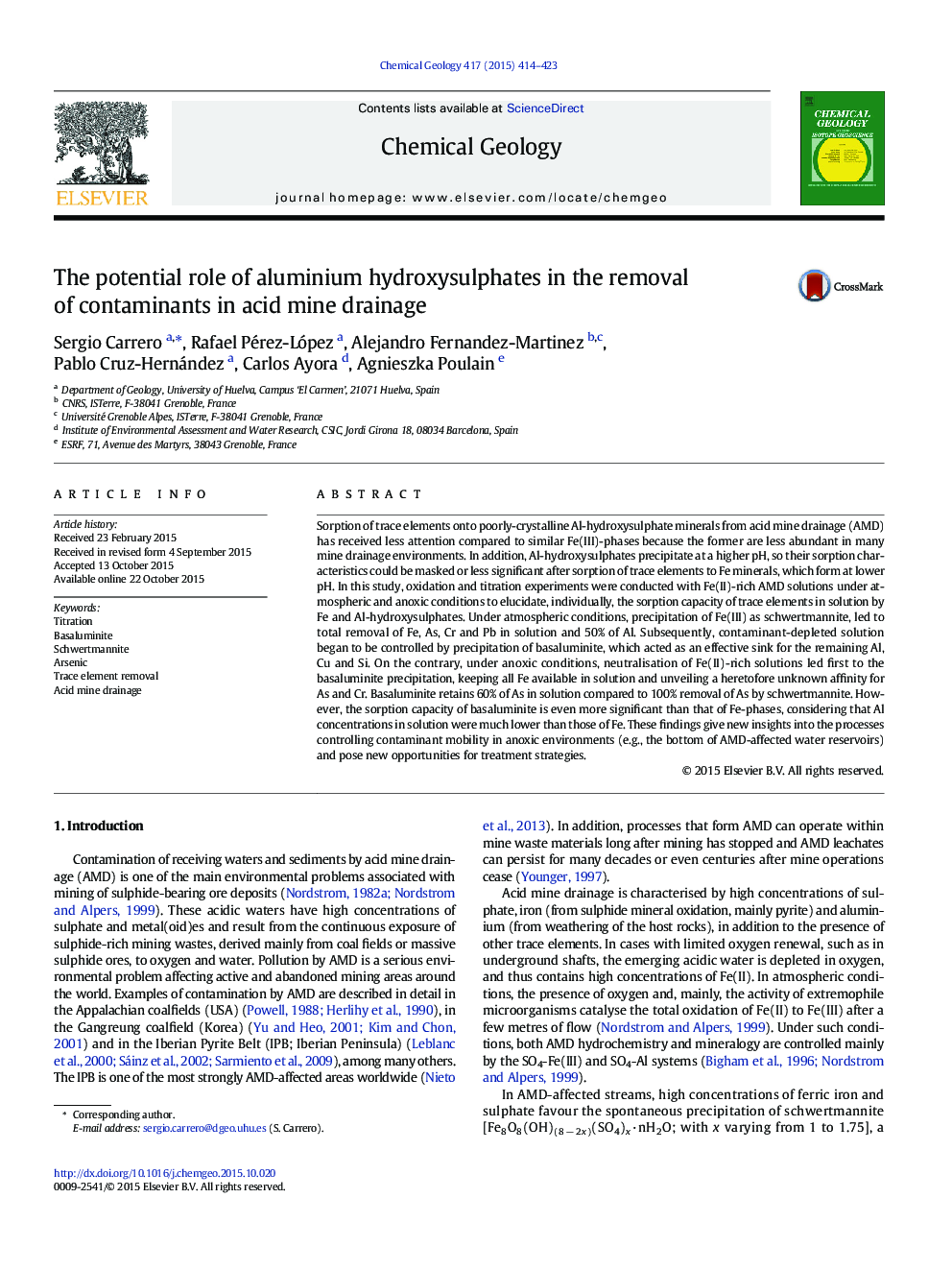| کد مقاله | کد نشریه | سال انتشار | مقاله انگلیسی | نسخه تمام متن |
|---|---|---|---|---|
| 6436303 | 1637557 | 2015 | 10 صفحه PDF | دانلود رایگان |
- Fe(II)-rich acid mine drainage was neutralised by titration under atmospheric and anoxic conditions.
- The well-known precipitation sequence of first schwertmannite and then basaluminite was observed under atmospheric conditions.
- Schwertmannite totally retained As and Cr and basaluminite acted as sink of Si and Cu.
- The experiment under anoxic conditions showed the high affinity of basaluminite for As and Cr.
- The role of basaluminite removing trace elements as As has been up-to-now unknown.
Sorption of trace elements onto poorly-crystalline Al-hydroxysulphate minerals from acid mine drainage (AMD) has received less attention compared to similar Fe(III)-phases because the former are less abundant in many mine drainage environments. In addition, Al-hydroxysulphates precipitate at a higher pH, so their sorption characteristics could be masked or less significant after sorption of trace elements to Fe minerals, which form at lower pH. In this study, oxidation and titration experiments were conducted with Fe(II)-rich AMD solutions under atmospheric and anoxic conditions to elucidate, individually, the sorption capacity of trace elements in solution by Fe and Al-hydroxysulphates. Under atmospheric conditions, precipitation of Fe(III) as schwertmannite, led to total removal of Fe, As, Cr and Pb in solution and 50% of Al. Subsequently, contaminant-depleted solution began to be controlled by precipitation of basaluminite, which acted as an effective sink for the remaining Al, Cu and Si. On the contrary, under anoxic conditions, neutralisation of Fe(II)-rich solutions led first to the basaluminite precipitation, keeping all Fe available in solution and unveiling a heretofore unknown affinity for As and Cr. Basaluminite retains 60% of As in solution compared to 100% removal of As by schwertmannite. However, the sorption capacity of basaluminite is even more significant than that of Fe-phases, considering that Al concentrations in solution were much lower than those of Fe. These findings give new insights into the processes controlling contaminant mobility in anoxic environments (e.g., the bottom of AMD-affected water reservoirs) and pose new opportunities for treatment strategies.
Journal: Chemical Geology - Volume 417, 6 December 2015, Pages 414-423
